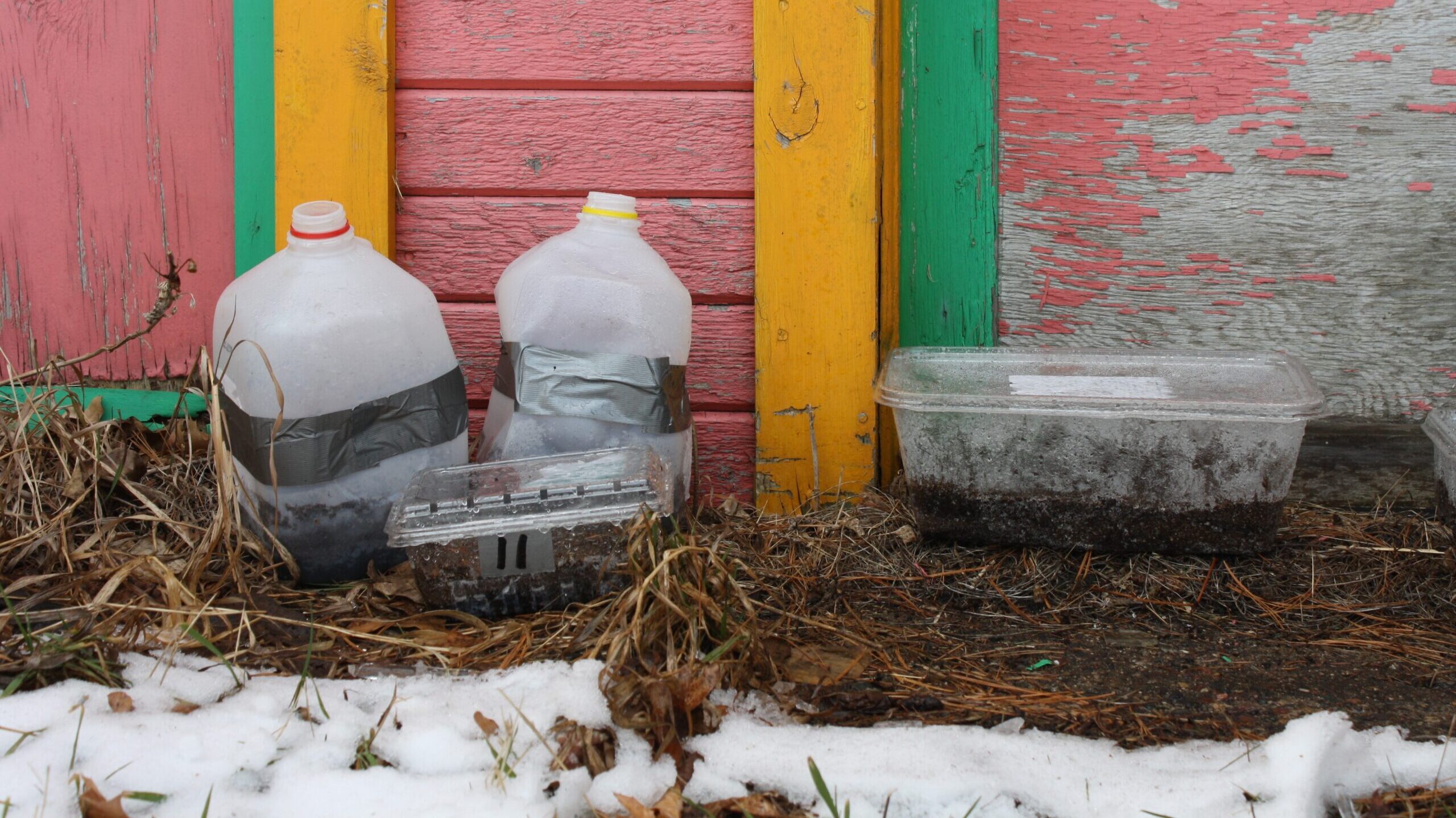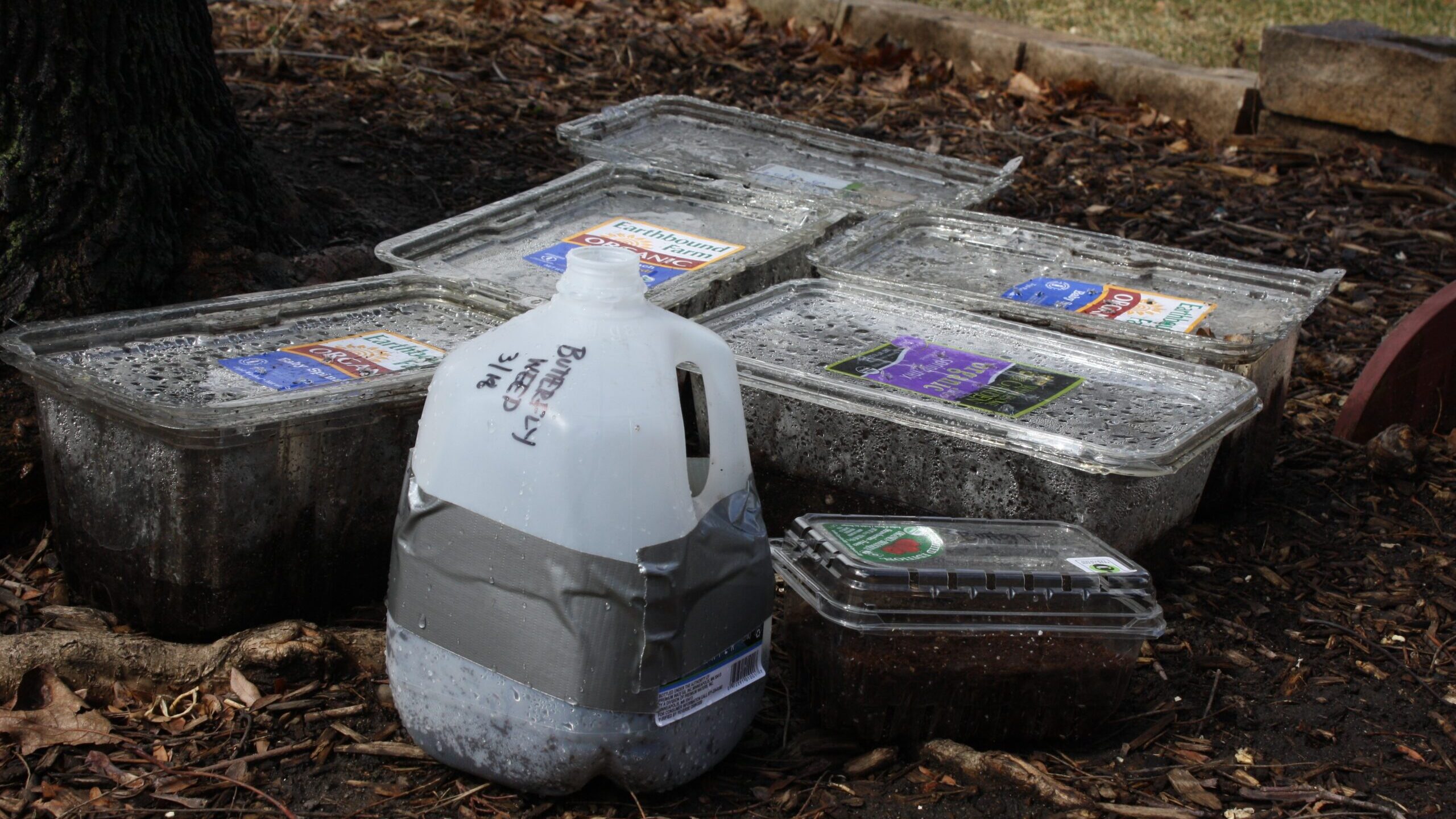
Winter sowing is a method of starting seeds outside using little greenhouses made from recycled, food-grade containers. This method relies on Mother Nature to decide when the time is right to germinate. It produces sturdy seedlings that are already acclimated to the outdoors and ready to plant in the garden once the weather warms up.
Lots of seeds can be winter-sown. Look for the blue winter sowing symbol on seeds at the co-op, and read the backs of seed packages. If they are cold-hardy, frost-tolerant, or will self-sow, they will work. Natives are excellent choices!
Materials
- Plastic water/milk jugs, soda or juice bottles, or clamshell containers — any food-grade container
that lets light in and is deep enough to hold 3” of soil with room above for seedlings to grow - Growing medium
- A sharp knife or scissors for cutting through plastic
- A tool to poke holes in the top and bottom of your container, if needed
- Duct tape and a permanent marker
Prep & Planting

1. Wash and rinse out your container.
2. If you aren’t using a clamshell container that already has holes, poke holes in the top and bottom of the container. This allows water and air to move freely in and out. If you are using a jug or bottle, simply remove the cap, then slice around the middle of the jug/bottle, leaving a couple of inches uncut to act as a hinge. This will allow easy access to the inside of the container during the growing process.
3. Fill your containers with about 3” of growing medium. Wet it thoroughly and let drain.
4. Sprinkle seeds on top, then lightly cover them with more growing medium. Do not plant too closely, as it will be more difficult to separate the seedlings when you are transplanting them to the garden. Lightly water again.
5. Tape hinged containers shut with duct tape. Replace lids on all other containers.
6. Using a permanent marker, label your container with the kind of seed you planted and the date you planted it.
7. Place containers outside in a spot where they will get plenty of sun, snow and rain, but will be safe from wind and animals.
Watch & Wait!
The seeds will know when to germinate and will not be affected by the deep cold of winter. The warm sun, snow and rain will work together to “wake up” the seeds when the time is right.
As the days start to get longer and warmer, check your containers on a regular basis to make sure they stay moist. You can be generous with watering, as any excess will drain out of the holes in the bottom. Be careful not to wash out the seeds.
After the seedlings sprout and temperatures warm, gradually start to open your containers, exposing them to air movement and keeping them from overheating. They will dry out faster with their lids off, so keep them watered. Eventually, they will outgrow their containers — this is the right time for you to plant them in your garden!

